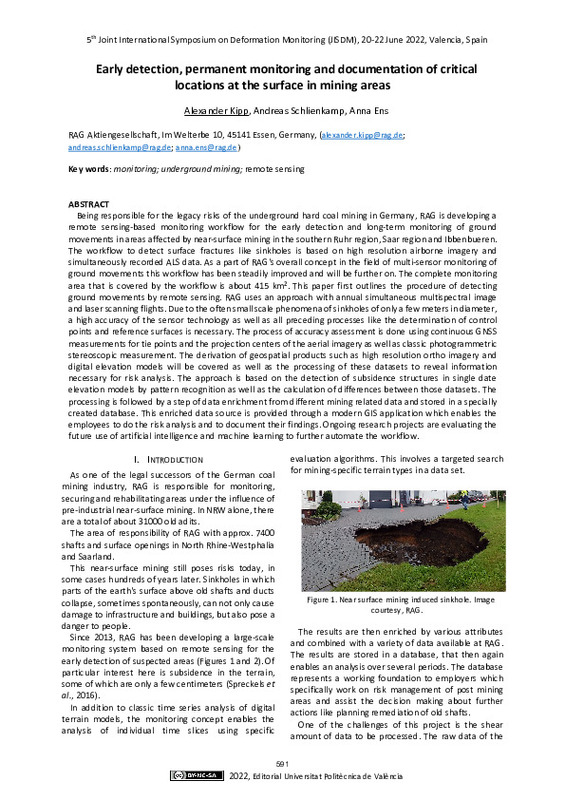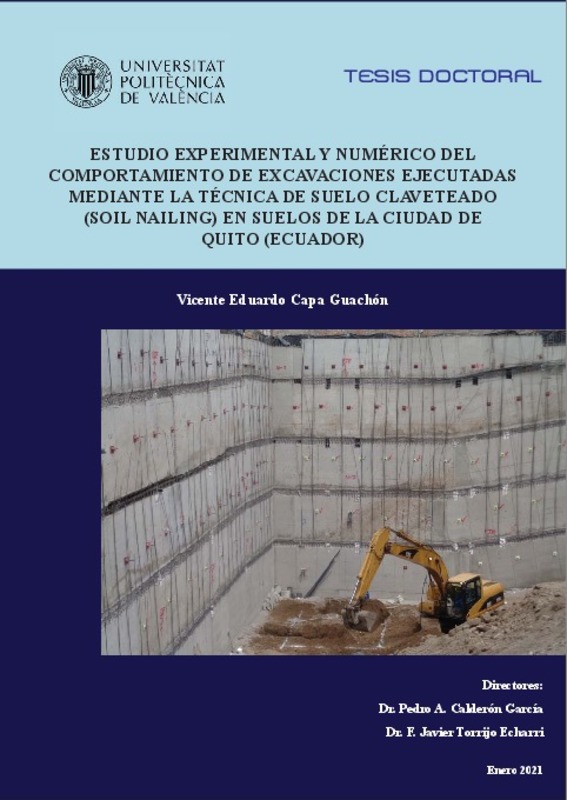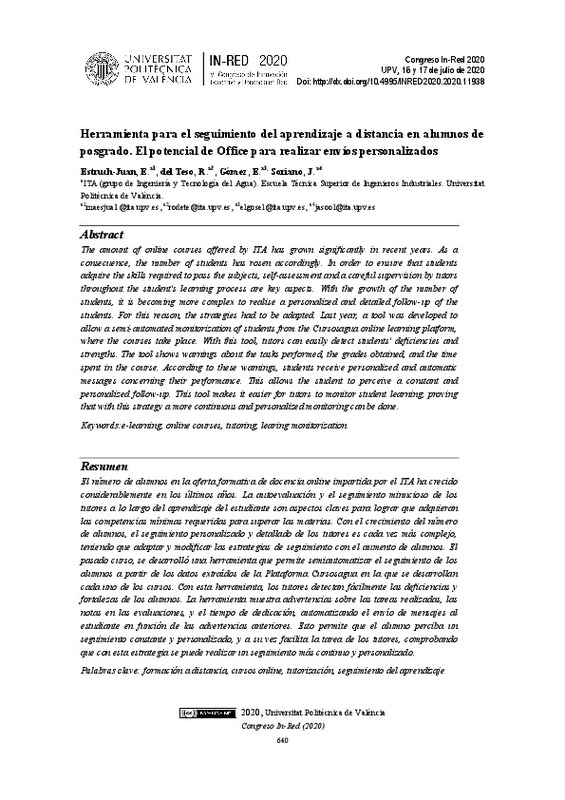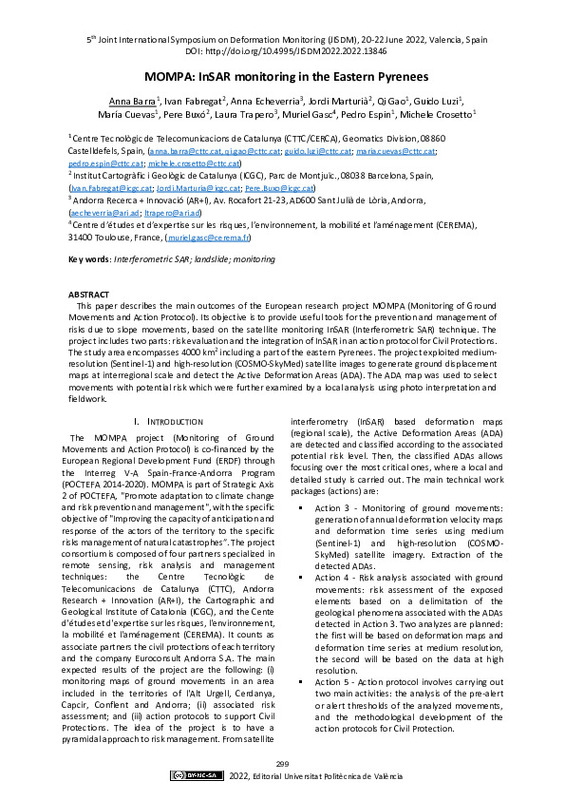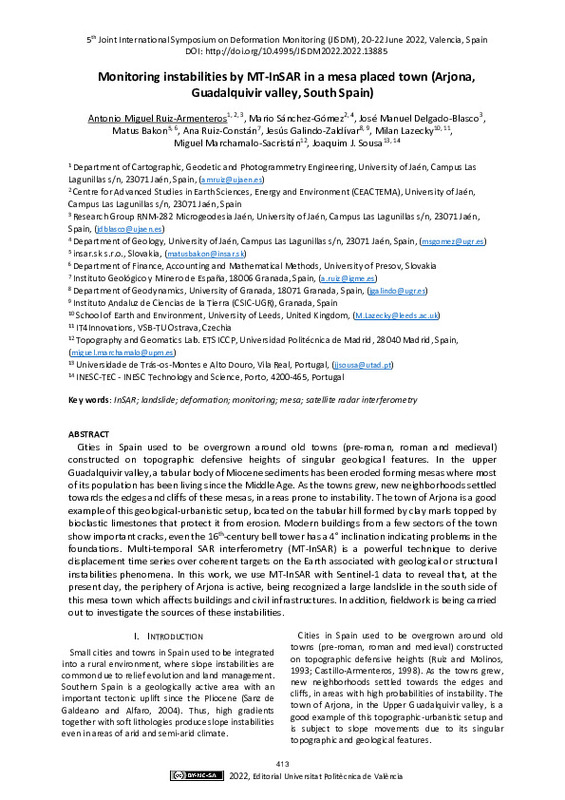

Listar por palabra clave "Monitoring techniques"
RiuNet: Repositorio Institucional de la Universidad Politécnica de Valencia
- RiuNet repositorio UPV
- :
- Listar por palabra clave
JavaScript is disabled for your browser. Some features of this site may not work without it.
Buscar en RiuNet
Listar
Mi cuenta
Ayuda RiuNet
Admin. UPV
Listar por palabra clave "Monitoring techniques"
Mostrando ítems 1-8 de 8
-
Vilar Mateo, Ruth; Nadarajah, Nishaanthan; Nirmalathas, Ampalavanapillai; Llorente Sáez, Roberto; Ramos Pascual, Francisco (Institution of Engineering and Technology (IET), 2012-04)[EN] A first-order polarisation mode dispersion (differential group delay (DGD)) monitoring technique using a low-speed detector for 40 Gb/s return to zero data transmission is proposed and experimentally demonstrated. The ...
-
Kipp, Alexander; Schlienkamp, Andreas; Ens, Anna (Editorial Universitat Politècnica de València, 2023-01-27)[EN] Being responsible for the legacy risks of the underground hard coal mining in Germany, RAG is developing a remote sensing-based monitoring workflow for the early detection and long-term monitoring of ground movements ...
-
Capa Guachón, Vicente Eduardo (Universitat Politècnica de València, 2021-03-22)[ES] La técnica de "Soil Nailing" es un procedimiento de refuerzo del terreno utilizado continuamente en la estabilización de taludes y cortes del terreno en proyectos de ingeniería geotécnica. Esta técnica se aplica con ...
-
Estruch-Juan, E.; Del Teso, R.; Gómez, E.; Soriano, J. (Editorial Universitat Politècnica de València, 2021-03-24)[ES] El número de alumnos en la oferta formativa de docencia online impartida por el ITA ha crecido considerablemente en los últimos años. La autoevaluación y el seguimiento minucioso de los tutores durante el aprendizaje ...
-
Argente Ros, Álvaro (Universitat Politècnica de València, 2024-11-07)[ES] El proyecto propuesto se enfoca en la automatización y supervisión de un sistema de riego utilizando comunicación IoT. Se llevará a cabo en un área de cultivo donde no hay cobertura móvil ni redes disponibles ubicada ...
-
Barra, Anna; Fabregat, Ivan; Echeverria, Anna; Marturia, Jordi; Colell, Xavier; Gao, Qi; Luzi, Guido; Cuevas, María; Buxó, Pere; Trapero, Laura; Gasc, Muriel; Espin, Pedro; Crosetto, Michele (Editorial Universitat Politècnica de València, 2023-01-27)[EN] This paper describes the main outcomes of the European research project MOMPA (Monitoring of Ground Movements and Action Protocol). Its objective is to provide useful tools for the prevention and management of risks ...
-
Ruiz-Armenteros, Antonio; Sánchez-Gómez, Mario; Delgado-Blasco, José Manuel; Bakon, Matus; Ruiz-Constán, Ana; Galindo-Zaldívar, Jesús; Lazecky, Milan; Marchamalo-Sacristán, Miguel; Sousa, Joaquim J. (Editorial Universitat Politècnica de València, 2023-01-27)[EN] Cities in Spain use to be overgrown around old towns (preroman, roman and medieval) constructed on topographic defensive heights of singular geological features. In the upper Guadalquivir valley, a tabular body of ...
-
Kallio, Ulla; Eskelinen, Joona; Jokela, Jorma; Koivula, Hannu; Marila, Simo; Näränen, Jyri; Poutanen, Markku; Raja-Halli, Arttu; Rouhiainen, Paavo; Suurmäki, Heli (Editorial Universitat Politècnica de València, 2023-01-27)[EN] VLBI telescope reference point, the closest point in the telescope primary axis from the secondary axis, is typically determined indirectly by observation of points co-rotating with the telescope. We have previously ...
Mostrando ítems 1-8 de 8

Universitat Politècnica de València. Unidad de Documentación Científica de la Biblioteca (+34) 96 387 70 85 · RiuNet@bib.upv.es



